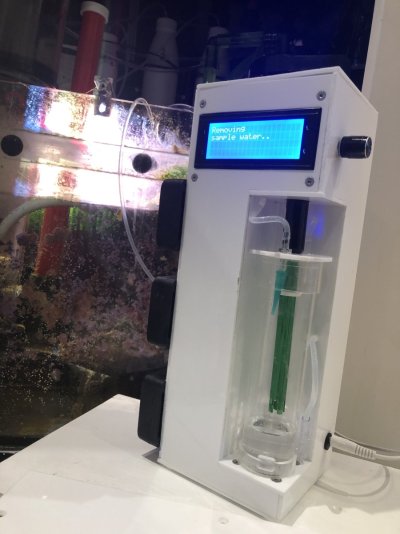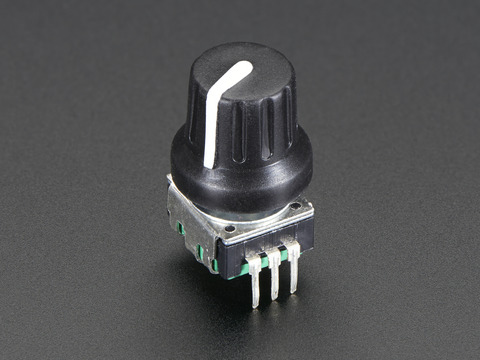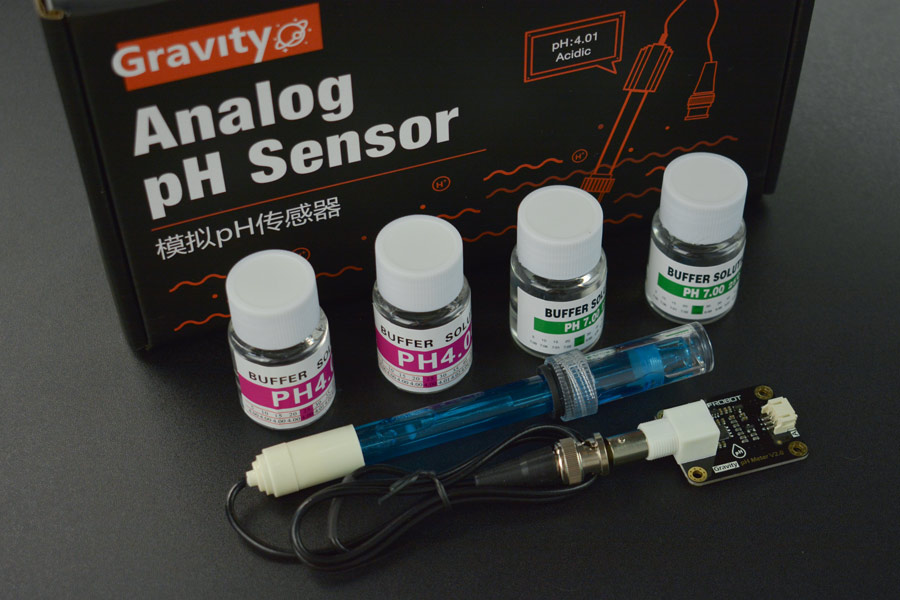Navigation
Install the app
How to install the app on iOS
Follow along with the video below to see how to install our site as a web app on your home screen.
Note: This feature may not be available in some browsers.
More options
You are using an out of date browser. It may not display this or other websites correctly.
You should upgrade or use an alternative browser.
You should upgrade or use an alternative browser.
DIY Alkalinity Monitor
- Thread starter Borat
- Start date
- Tagged users None
Consistent means if you retest immediately. There are (sometimes) instances where the results may deviate by more than 0.1 DKH and it's unclrear what might be causing it (maybe displaced stirrer bit?).ok so i think i have some issues with my pH probe as i don't get consistent results
which probe do you use and how do you do the calibraton ?
(is you code open source?)
The accuracy of PH probe is probably the most important thing. I am now using Milwaukee se220 double-junction PH probe but previously used Extech Instruments 601500, both are very good probes.
I published my code here - what do you mean by "open source"?extech 601500 like me, but i don't get consistent results. (even pH 7 is far away, insted of 1500 i'm near 1100)
is you code open source?
- Joined
- Jun 24, 2020
- Messages
- 601
- Reaction score
- 131
I mean if i can find the code somewhere. i dind't find the complete code here.I published my code here - what do you mean by "open source"?
I'm looking for the ph probe calibration, how do you do that by code ?
The code in in page 7 of this thread, you clearly didn't look thoroughly..ok so i think i have some issues with my pH probe as i don't get consistent results
which probe do you use and how do you do the calibraton ?
(is you code open source?)
calibration is just about measuring voltage level at PH4 and at PH7 and then interepolating any other voltage to derive PH.. I wrote my own calibration routine..
- Joined
- Jun 24, 2020
- Messages
- 601
- Reaction score
- 131
im not using an external ADC , latest esp32 chips have the ADC calibraton done in factory but im having huge issue with repetibility. if i do 2 consecutive tests, i get two different results
This is a reworked version of alk monitor:
- larger LCD screen
- well organised electronics inside
- reaction chamber and PH probe easily accessible from outside

I have changed the stirrer bit to a smaller one - 10mm long, 4mm wide. This minimizes the risk of stirrer bit displacement. Current accuracy of DKH measurement is less than 0.025 DKH (if test is repeated). Current acid concentration is 0.025N.
- larger LCD screen
- well organised electronics inside
- reaction chamber and PH probe easily accessible from outside

I have changed the stirrer bit to a smaller one - 10mm long, 4mm wide. This minimizes the risk of stirrer bit displacement. Current accuracy of DKH measurement is less than 0.025 DKH (if test is repeated). Current acid concentration is 0.025N.
- Joined
- Jun 24, 2020
- Messages
- 601
- Reaction score
- 131
Did you compare with commercial kh test like Tropic Marin, Hanna o red sea ?
I have a similair system (not based on your code but the Math is the same) and I'm geting A LOT of difference every time. more or less 1.0 / 1.5 dkh less than the commercial test (tried hanna, tropic marin, salifer and redsea, they are almost identical +/- 0.1/0.2 differences but 1.5 difference than mine)
I have a similair system (not based on your code but the Math is the same) and I'm geting A LOT of difference every time. more or less 1.0 / 1.5 dkh less than the commercial test (tried hanna, tropic marin, salifer and redsea, they are almost identical +/- 0.1/0.2 differences but 1.5 difference than mine)
in order for us to help you, prob need to see what your set up looks like. Impossible to guess as to why you are getting different results.Did you compare with commercial kh test like Tropic Marin, Hanna o red sea ?
I have a similair system (not based on your code but the Math is the same) and I'm geting A LOT of difference every time. more or less 1.0 / 1.5 dkh less than the commercial test (tried hanna, tropic marin, salifer and redsea, they are almost identical +/- 0.1/0.2 differences but 1.5 difference than mine)
If the difference in your system is always 1.5 from your commercial test I suggest that your build is a success. I think in the reef world the goal is a stable alk in the 8-10 range, not a specific number. The point of this device is to track changes in alk over time. I use it to make sure I adjust my effluent as the tank SPS grow and more alk is used.
Here is my experience with this build
Step 1: Sourcing parts
Electronic: Since Borat sourced many of his parts from England and I am across the pond in Alaska I didn’t have access to the same parts.
1- Arduino mega mini-
2- ESP32
3. Stepper drivers
4- Ph Probe
5- Stepper motors
I made lots of mistakes on this.
The first ones I bought were NEMA 12. Too small
The second ones I bought were NEMA 17 but lacked the torque ( I think they had 12Ncm) to turn in a the peristaltic pump.
This pump has high torque. Buy this one, it has 55Ncm
6: Stirrer fan
40mm X 40 mm X 10 mm, 12 V with two wires. I got this 3 wire one, but I didn’t need to.
7: LLC converter: this allows a change in voltage to provide power to ESP32.
https://www.adafruit.com/product/757
Easy to damage, buy an extra
8: rotary encoder:
https://www.adafruit.com/product/4991
And

 www.adafruit.com
www.adafruit.com
9: LED
https://www.adafruit.com/product/4650
10: DS 3231 RTC: its your clock to keep track of time
11: Power supply. You need something that converts your AC to DC power. Specifically 12 V DC power. This device will connect to a computer cord and provide power to your device. This was waterproof and I liked that.
12: 12 V to 5 V converter. Actually a fairly hard part to source
Part 1470-VR10S05-ND at Digi-Key.com
13: C14 panel, this connects your power supply to your computer cable.
digi-key.com. Part number 486-1003-ND
14: Ph probe board: apparently the probe is not that good, can’t just buy the board. May be sourced somewhere else.

 www.dfrobot.com
www.dfrobot.com
15: capacitor 100uF 16v
17: Relay switch:
Materials:
1: Santoprene tubing for acid handling: I used this for the pump that carries the acid.
2: Barb fittings:
3: M3-10 nuts
4: M4 bolts
5: JST connections: this connects PCB board to electronic devices.
6: Acrylic was easy, I found a local plastic supply store and bought some of their scraps.
7. HCL 1.0M. I bought this from a science supply store. No one would ship to alaska. So it was shipped to the lower 48 and a friend is bringing with them when they come up. This was the hardest part to source..
Tools:
1: sodering iron
2. Crimper tool
https://www.amazon.com/dp/B01N4L8QMW?psc=1&ref=ppx_yo2ov_dt_b_product_details
3: Multimeter: you need to check and make sure your soldering joints are good and trouble shoot what is not working.
Step 2: electronics assembly
1- I sourced by PC boards from here
https://jlcpcb.com/?from=VGB&gad=1&...Ot6L2_r6JhI658Z05rhRAY9W4InXfxUBoCQikQAvD_BwE
Borat provides the “gerber” files. The site will ask you to “add gerber file”. Simply add and buy. You can only buy quantities of 5+
2- Soder components to PC board. I had never sodered before. I watched a few YouTube videos. I would recommend starting with the JST connections. Then move to other things. Once soddered on it is hard to remove.
3- Wiring
-each component should have a Ground and a VCC (positive). You will need to make a lot of wires and connections for each component to attach to PCB.

Step 3: Build you case
This was fairly straight forward. Measure, cut, weld. Borat has some great ideas on how to do this and I don’t think any additional input is needed.
Step 4: Code
Okay here is where it gets complicated.
1-Download the Arduino code provided by Borat
2- Open the code on your computer. It will look complicated.
3- The first part of the code reads “include”…This indicates what libraries need to be added to the code. Search and add all libraries in “library manager on the left side”. They will get saved somewhere on your computer and the code will retrieve them when it is uploaded.
4- There are some ares of the code that need to be changes. Date for example. Time also. Make these changes.
5- Plug the board into your computer. You will then select a board to upload code to. Select “mega 2560”
6- Under tools select the port where your Arduino board is is plugged into your computer.
7- Upload. If you did it all right the code will upload.
Step 1: Sourcing parts
Electronic: Since Borat sourced many of his parts from England and I am across the pond in Alaska I didn’t have access to the same parts.
1- Arduino mega mini-
2- ESP32
3. Stepper drivers
4- Ph Probe
5- Stepper motors
I made lots of mistakes on this.
The first ones I bought were NEMA 12. Too small
The second ones I bought were NEMA 17 but lacked the torque ( I think they had 12Ncm) to turn in a the peristaltic pump.
This pump has high torque. Buy this one, it has 55Ncm
6: Stirrer fan
40mm X 40 mm X 10 mm, 12 V with two wires. I got this 3 wire one, but I didn’t need to.
7: LLC converter: this allows a change in voltage to provide power to ESP32.
https://www.adafruit.com/product/757
Easy to damage, buy an extra
8: rotary encoder:
https://www.adafruit.com/product/4991
And

Rotary Encoder + Extras
This rotary encoder is the best of the best, it's a high-quality 24-pulse encoder, with detents and a nice feel. It is panel mountable for placement in a box, or you can plug it into a ...
9: LED
https://www.adafruit.com/product/4650
10: DS 3231 RTC: its your clock to keep track of time
11: Power supply. You need something that converts your AC to DC power. Specifically 12 V DC power. This device will connect to a computer cord and provide power to your device. This was waterproof and I liked that.
12: 12 V to 5 V converter. Actually a fairly hard part to source
Part 1470-VR10S05-ND at Digi-Key.com
13: C14 panel, this connects your power supply to your computer cable.
digi-key.com. Part number 486-1003-ND
14: Ph probe board: apparently the probe is not that good, can’t just buy the board. May be sourced somewhere else.

Gravity: Analog pH Sensor/Meter Kit V2 (Arduino & Raspberry Pi & micro:bit Compatible)
DFRobot Gravity Analog pH Sensor is specifically designed to measure the pH of the solution and reflect the acidity or alkalinity. DFRobot offers wide inventory, datasheets & technical support.
15: capacitor 100uF 16v
17: Relay switch:
Materials:
1: Santoprene tubing for acid handling: I used this for the pump that carries the acid.
2: Barb fittings:
3: M3-10 nuts
4: M4 bolts
5: JST connections: this connects PCB board to electronic devices.
6: Acrylic was easy, I found a local plastic supply store and bought some of their scraps.
7. HCL 1.0M. I bought this from a science supply store. No one would ship to alaska. So it was shipped to the lower 48 and a friend is bringing with them when they come up. This was the hardest part to source..
Tools:
1: sodering iron
2. Crimper tool
https://www.amazon.com/dp/B01N4L8QMW?psc=1&ref=ppx_yo2ov_dt_b_product_details
3: Multimeter: you need to check and make sure your soldering joints are good and trouble shoot what is not working.
Step 2: electronics assembly
1- I sourced by PC boards from here
https://jlcpcb.com/?from=VGB&gad=1&...Ot6L2_r6JhI658Z05rhRAY9W4InXfxUBoCQikQAvD_BwE
Borat provides the “gerber” files. The site will ask you to “add gerber file”. Simply add and buy. You can only buy quantities of 5+
2- Soder components to PC board. I had never sodered before. I watched a few YouTube videos. I would recommend starting with the JST connections. Then move to other things. Once soddered on it is hard to remove.
- Use a good flux
- Keep a clean tip
3- Wiring
-each component should have a Ground and a VCC (positive). You will need to make a lot of wires and connections for each component to attach to PCB.
- RTC, LED, Rotary have SDA and SCL. (4 total wires)
- Probe has 3P0 ( 3 total wires )
- Stepper motors are also unique. You need find which wire is which polarity. Most motors come with a diagram that labels wires A+ A- B+ B-. You need to match stepper motor wires to driver wires. This can be done by identifying driver wires and then stepper motor wires. There are tutorials online on how to identify stepper motor wires since this is not always clear.
- 12V to 5 V DC conversion: make sure you know which side is 12 V and which is 5 V. Look at the website and it will tell you. If you put it in backwards you will fry components. See attached for the one I sourced.
-
- Relay switch is unique ( 3 wires in and 2 wires out). This turns the fan on and off during the test.
- You will have to split your power supply. It will send one wire to the PCB and another + goes to the relay and a ground goes to your stir fan.
- You will have to split your power supply. It will send one wire to the PCB and another + goes to the relay and a ground goes to your stir fan.
- Capacitors, you will know if you put them in backwards.
Step 3: Build you case
This was fairly straight forward. Measure, cut, weld. Borat has some great ideas on how to do this and I don’t think any additional input is needed.
- few pointers.
- Thicker acrylic may be more manlier, but is not better
- Cylinder shaped test container will stir better then a square one. Don’t make a square one
- Keep at least one side and probably the top accessible for repairs.
- Cut holes into sides before glueing it together
Step 4: Code
Okay here is where it gets complicated.
1-Download the Arduino code provided by Borat
2- Open the code on your computer. It will look complicated.
3- The first part of the code reads “include”…This indicates what libraries need to be added to the code. Search and add all libraries in “library manager on the left side”. They will get saved somewhere on your computer and the code will retrieve them when it is uploaded.
4- There are some ares of the code that need to be changes. Date for example. Time also. Make these changes.
5- Plug the board into your computer. You will then select a board to upload code to. Select “mega 2560”
6- Under tools select the port where your Arduino board is is plugged into your computer.
7- Upload. If you did it all right the code will upload.
WOW!!!!This is a reworked version of alk monitor:
- larger LCD screen
- well organised electronics inside
- reaction chamber and PH probe easily accessible from outside

I have changed the stirrer bit to a smaller one - 10mm long, 4mm wide. This minimizes the risk of stirrer bit displacement. Current accuracy of DKH measurement is less than 0.025 DKH (if test is repeated). Current acid concentration is 0.025N.
If you are out by fixed DKH from benchmarks - there could be a few possible reasons:
- benchmark is off (possible) google an article about lavender titration colour using salifert (https://www.reef2reef.com/threads/alkalinity-titration-endpoint-ph-salifert-endpoint-color.543556/)
- your probe calibration is off
- your reagent of of wrong concentration
- your PH endpoint is set differently (doubt it)
i always had ~0.3 dkh lower reading than salifert test, but accepted it by virtue of setting 4.4 ph endpoint and pink versus lavender titration cutoff
- benchmark is off (possible) google an article about lavender titration colour using salifert (https://www.reef2reef.com/threads/alkalinity-titration-endpoint-ph-salifert-endpoint-color.543556/)
- your probe calibration is off
- your reagent of of wrong concentration
- your PH endpoint is set differently (doubt it)
i always had ~0.3 dkh lower reading than salifert test, but accepted it by virtue of setting 4.4 ph endpoint and pink versus lavender titration cutoff
Last edited:
- Joined
- Jun 24, 2020
- Messages
- 601
- Reaction score
- 131
not sure if the difference is stable. That's what i'm trying to know.in order for us to help you, prob need to see what your set up looks like. Impossible to guess as to why you are getting different results.
If the difference in your system is always 1.5 from your commercial test I suggest that your build is a success. I think in the reef world the goal is a stable alk in the 8-10 range, not a specific number. The point of this device is to track changes in alk over time. I use it to make sure I adjust my effluent as the tank SPS grow and more alk is used.
It's a simple ESP32 with dfrobot analog ph meter (the v2, with 3.3v compatibility), an Extech ph probe (0.02 accuracy) and, testing it from a couple of days, the dfrobot ADS1115
What is strange is that every time i make a test, the result dkh is different from the previous (+/- 0.5). Probes is totally calibrated (with calibration solution at ph 4.01 i can see 4.01/4.02 ph, with the 7.0 I can see not more than 7.01)
Very very strange.
- Joined
- Jun 24, 2020
- Messages
- 601
- Reaction score
- 131
- your probe calibration is off
No, i've calibrated and tested multiple times. there is not more than 001/002 differene than the calibration solution
- your reagent of of wrong concentration
maybe, but i've used the reeffactory reagent 1:9 with RO water. Tested with a precision scale (1/10 grams). 100g of reagent, 900g of water.
- your PH endpoint is set differently (doubt it)
I stop titrating at ph 4.3 (4.5 gives even more distant results). Also, reading some chemicals books, 4.3 is the proper endpoint for titration because only at ph 4.3 you all carbonates dissolved.
i aleays had 0.3 dkh lower reading than salifert test, but accepted it by virtue of 4.4 ph endpoint and pink versus lavender titration cutoff
0.3 is much different than 1.0/1.5 like me. 0.3 (if stable) would be ok.
- Joined
- Jun 24, 2020
- Messages
- 601
- Reaction score
- 131
Also ,you are not using an external ADC. I'm currently using an ADC1115 that is 16bit precision, and should be much more sensitive than the stock ESP32 ADC (that was buggy in some hardware models) or Arduino.
Same probe like you, i think (extech 600150)
Same probe like you, i think (extech 600150)
Instable readings (in my experience) are caused by the stirrer failing to start.. If you have my v2 setup - it's not possible to see if the stirrer is working. This is the reason why I redesigned it. I also discovered that even a small stirrer bit sometimes fails to start (fans have very little torque) - so you have to adjust the strength of magnetic bit - so that it does not prevent the fan from rotating.. This is where I would focus my efforts, if I were you.not sure if the difference is stable. That's what i'm trying to know.
It's a simple ESP32 with dfrobot analog ph meter (the v2, with 3.3v compatibility), an Extech ph probe (0.02 accuracy) and, testing it from a couple of days, the dfrobot ADS1115
What is strange is that every time i make a test, the result dkh is different from the previous (+/- 0.5). Probes is totally calibrated (with calibration solution at ph 4.01 i can see 4.01/4.02 ph, with the 7.0 I can see not more than 7.01)
Very very strange.
I had changed the stirrer bit by choosing a much smaller one - but even that one failed to start today and with no stirring the PH reading remained constant (so failed test!). I am going to move the reaction chamber 2mm higher tomorrow to reduce the risk of stirrer motor failing to start. I also ordered slightly different stirrer bits - to experiment.
If you are constantly out by a fixed amount - it's not reallty a big deal, just choose a higher PH endpoint. The idea of alk monitor is not to give you the most precise DKH reading - but to give you an indication that your DKH changes. Stability is key, not the DKH level itself. I stopped checking absolute level long ago and all I care is that the level remains constant between consequitive readings.stirrer Always starts, it's a 5v DC motor , not a fan and i can see (and ear) the stirrer working as it's pretty noisy
Similar threads
- Replies
- 0
- Views
- 117
- Replies
- 63
- Views
- 1,724
- Replies
- 11
- Views
- 172
-
- Poll
- Replies
- 88
- Views
- 1,821

















